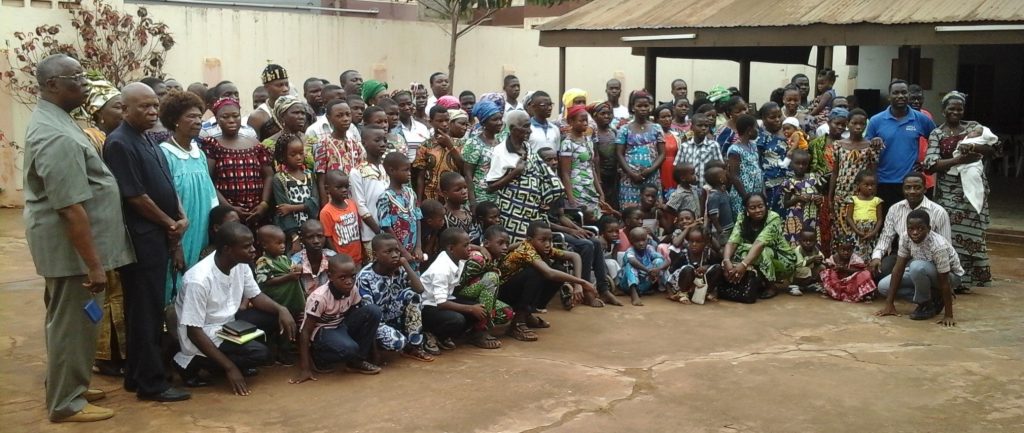We are celebrating good news from West Africa—34 members from GCI congregations in Kpodzi, Ghana, and nearby Lomé, Togo, were baptized at a recent combined church service. Below is a picture of the group gathered for the service. We rejoice with these GCI brothers and sisters!
Author: GCI Media
Meet our new pastors
Several of GCI-USA’s newest pastors and pastors-in-training (pastoral residents) were interviewed at the recent New Pastors Orientation Conference held at GCI’s Home Office in Glendora, CA. Here are videos of interviews with Pastoral Resident Jillian Caranto and Pastor Craig Kuhlman.
On YouTube at http://youtu.be/cbeq6QI7Er4.
On YouTube at http://youtu.be/ZKzJjOHgwM4.
The church and its ministry (part 7)
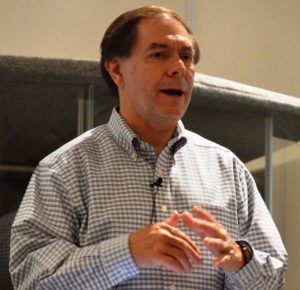
Here is part 7 of an essay from Gary Deddo on the nature of the church and its ministry. For other parts of the essay, click a number: 1, 2, 3, 4, 5, 6, 7, 8, 9, 10, 11, 12. We encourage you to add your thoughts and questions in the “comments” box at the end of each post to get a discussion going. To read the full essay in booklet form, click here. To read the related essay, “Clarifying Our Theological Vision,” click here.
Gary delivered two lectures related to this essay at the recent New Pastors Orientation Conference in Glendora, CA. Videos of the lectures have been posted on YouTube:
- Click here to watch Reading and Interpreting Scripture with Trinitarian Eyes.
- Click here to watch GCI Doctrines and How to Teach Them.
A Brief Theology of the Church
(with a view to equipping the saints for the work of ministry)
by Dr. Gary Deddo
Part 7: On Being the Body of Christ
Last time we looked at how the church’s proclamation, in addition to preaching, occurs through its worship and witness. This time we’ll note that though the New Testament does not give a lot of detail concerning how the church is to function, it does specify certain patterns and practices that build off of and are arranged according to the theological insights we already have looked at in this essay.
How is the church to operate?
As the body of Christ, the church is called to live out its life according to whose church it is and how it is related to the one to whom it belongs and from whom it derives its life and vocation. The church is thus to operate in accordance with its God-given nature, whether that operation is specified in general principles or in particular New Testament descriptions of the church’s form and structure. Another way to say this is that the church is to be built up with Christ as its living cornerstone, with its foundation being the written Word of God (Scripture) interpreted in line with the Living Word of God (Jesus Christ).

(used with permission)
What, if anything, does the New Testament teach us as being normative for the life of a local church (congregation) in our day? Answering that question requires discernment, taking into account the whole counsel of God regarding how the parts fit into the whole. The greatest potential pitfall in this discernment process is taking a particular event or practice in the church recorded in the New Testament, then assuming it is a principle or norm that should be applied to the whole church in all times and places, including ours.
Descriptions of the early church (with many of them found in the book of Acts) do not automatically serve as prescriptions for how the church universal ought to be. However, some of these descriptions may be expressions of more general patterns that can and should be emulated throughout the church universal. Discerning which is which, requires exploring whether or not there is more explicit teaching in the New Testament that presents such ways of operating as general principles or norms for the whole church.
As we engage in this discernment process, we first acknowledge that many practical details of how a church should function are not specified in the New Testament. That is so because in the New Testament, there is a three-fold assumption at work: 1) that Jesus will remain in living contact with his church through the active ministry of the Holy Spirit, 2) that the church will have the written Word of God to consult, and 3) that the church will have overseers (pastors) and other leaders who, following the Spirit and Scripture, will possess the wisdom, gifts and experience needed to lead the church in the way of Jesus. Thus we understand that not every aspect of the church’s operations needs to be specified in Scripture. God apparently decided that his gifts of the guiding Spirit, the inspired written Word, and anointed leadership are sufficient for Jesus to remain Lord of his body, the church.
What then can we learn from Scripture about the particular form and shape of a local church, built as it is in communion with Christ as its Lord and Savior by the Spirit? This question leads us back to passages in the New Testament that speak directly to the church being the body of Christ. In this section of the essay we’ll consider not so much the vital relationship of the body to its Head, but the dynamic relationship of the members with each other. This issue is addressed in several New Testament passages, particularly in Ephesians 4, Romans 12 and 1 Corinthians 11. This time we’ll focus on Ephesians 4.
Many members, one body
The primary dynamic of the life in the body of Christ being highlighted in each of these passages is how there are many members yet one body. The problem being addressed is the fallen human tendency to want to go our own way and thus undo the unity of the church, or for that unity to be regarded in such a way that the distinction of the many is diminished. Though unity and diversity are often at odds with one another, in the body of Christ and by the Spirit they go together, though how they go together takes discernment—it’s not a mindless union, nor does it occur automatically, as Paul makes clear. True unity with diversity is a miracle of the Spirit of Jesus that must be purposefully received and thus shared in.
In Ephesians 4:1-16 Paul describes key elements of life in the body of Christ. He shows that our response to what our Lord has done (and is doing) in building his one church begins by recognizing the worth of Christ and all he has done for us and given to us. As we recognize that worth, we will live in a way that allows us to show forth that we belong to Christ, displaying “humility and gentleness, with patience, bearing with one another in love,” being “eager to maintain the unity of the Spirit in the bond of peace” (Ephesians 4:2-3).
Out of this center of our relationship with Christ arises our relationship with one another. Our oneness as the body of Christ is the oneness that results from us being bound together to Jesus Christ—the one we worship and the one to whom we are called to bear both direct and indirect witness. Only as these characteristics arise out of our relationship with Christ will the many members of his one body, the church, be able to maintain or act according to the unity given it by Christ himself, for as Paul says,
There is one body and one Spirit—just as you were called to the one hope that belongs to your call—one Lord, one faith, one baptism; one God and Father of all, who is over all and through all and in all. (Ephesians 4:4-6)
Notice how the indicative of the grace (the gift of oneness we are given in Christ) is the ground (reason or basis) for our living out and thus manifesting that oneness. The gift of oneness thus precedes what we do to live it out in our corporate life. Indeed, each congregation of the body of Christ is called to manifest and so testify to the oneness of Christ. This is also the calling of each denomination (collections or associations of congregations). All members, congregations, and denominations should be concerned to bear witness to the oneness of Christ’s body, the church. Though there are a variety of congregations and denominations, in reality there is but one church. Each “part” of the church ought to recognize, bear witness to, and so maintain that unity as much as possible. To do so is to have what is commonly referred to as an ecumenical spirit (with ecumenical meaning “pertaining to the whole”). Where there are certain divisions that compromise this wholeness, efforts should be made to restore unity.
This does not mean that there cannot be certain kinds of differences between congregations and denominations. Some differences do not betray the essential unity of the body of Christ. Examples would be speaking different languages or meeting in different locations. We must not define the unity of the church in accordance with some idea or ideal of our own invention. Certain notions of unity—namely absolute uniformity in all things at all levels, of every kind—rule out Christ’s kind of unity, a unity that makes room for (and even encourages) certain kinds of diversity.
The church’s identifying “marks”
What then defines the church’s unity? As stated in the Nicene Creed, the one church is identified by four particular “marks” (signs): 1) the church is one, 2) it is holy, 3) it is catholic (meaning universal) and, 4) it is apostolic. During the Reformation these marks were qualified by noting that the one, holy, catholic and apostolic church, being built on and sustained by Christ, is regulated by the preaching of the Word of God, the right offering of the sacraments (the Lord’s Supper and baptism), and the maintenance of holy discipline. Thus all four marks of the church, so qualified, direct our focus onto Christ, the one living cornerstone and foundation of his church.
The church’s oneness comes from being joined to Christ, for he is what the members of his body have in common. The church’s holiness is not originally its own—the church shares in Christ’s holiness as a continuing gift of grace. The church’s universality (its catholic nature, its wholeness), is also a gift that has to do with receiving its whole life from Christ through the Holy Spirit. The church’s apostolicity comes from its living under the authoritative word of Christ’s original apostles preserved for us in their authorized writings. Apostolicity also means that the church participates in Christ’s mission—it is sent out as those first apostles were, with the same message to witness in surrounding communities and the world as a whole.
While there are many practical questions that could be explored, we have in these marks a good foundation to fill out a bit the nature of Christ’s church and its unity in him so that we can begin to differentiate between the kinds of “diversity” that cause division or schism, and the kinds that are vital for church health—a diversity that demonstrates the multifaceted flourishing of Christ’s church, his one body. We’ll look at that issue more next time.
Meet our new pastors
Several of GCI-USA’s newest pastors and pastoral residents were interviewed at the recent New Pastors Orientation Conference held at the Home Office in Glendora, CA. Here are videos of interviews with Pastors JoAnn Lagge and Steve Solari.
On YouTube at http://youtu.be/TWG_-klLb7Q.
On YouTube at https://youtu.be/RMbUQBLF6eE.
Life Club meetings
Life Club International is a public speaking club sponsored by GCI-Britain. Life Club is similar in focus and format to GCI’s former Spokesman Club, which was modeled after Toastmasters International. Life Clubs are being held within GCI congregations around the world. Here from GCI Life Club International coordinator Geoff Sole are reports on several club meetings held over the last 12 months.
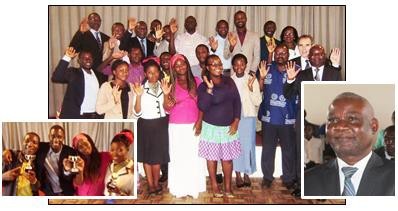
The first Life Club was held recently in the African nation of Malawi. Gardner Kunje (pictured above right) said at the end of the meeting that “the Club helps develop the whole person.” The congregation in Lilongwe, capital of Malawi, is also planning to start a Life Club soon.
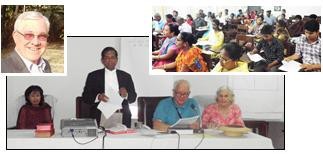
Rod Matthews (pictured above left), GCI Mission Developer encourages Life Clubs in the areas in which he works including Bangladesh. John Biswas (standing in the picture above) directs a meeting along with his wife Naomi and Robin and Arline Connelly during a 2016 visit to Bangladesh.

Joe D’Costa (pictured top left) reports from India that a Life Club was held there in October 2016. Those who spoke are shown in the picture. The Bangalore congregation hosts a Life Club about once a month and the Trichy and Chennai congregations host Life Clubs a few times each year. Joe writes: “I personally feel that these clubs not only improve the participants’ speaking ability, but also their personality. Over the years, I have seen our young people grow through these clubs. The communication skills they have acquired have helped them in their jobs and in life.”
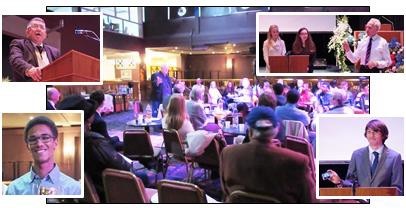
Bob Millman (pictured speaking, above center), GCI pastor in Alberta, Canada, directed the Paignton, England Life Club meeting last October. He said “the Club helps develop confidence.” Also pictured above are participants in that meeting.
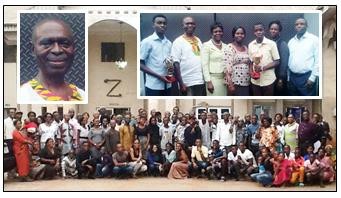
Essien George (pictured above left) of Nigeria reports that 65 people attended a combined Life Club meeting (pictured above) in Benin City, Nigeria last August during the GCI Nigerian National Convention. Life Clubs from Port Harcourt, Lagos, Kaduna, Ilorin, Mbaise/Owerri and Benin were represented.
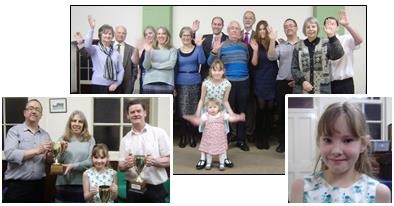
The Peterborough, England congregation hosted a Life Club meeting this January. The meeting opened with 1 Timothy 4:12, “Set an example for the believers in speech [and] in life.” Lydia Williams (pictured above right), aged 8, won the best speaker cup with her confident and comprehensive speech about flower arranging.
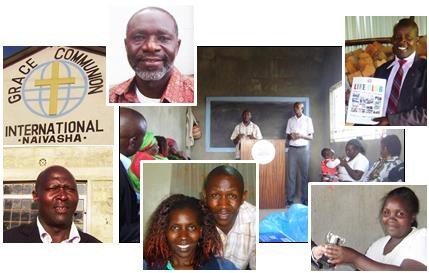
Kalengule Kaoma (pictured above, top,center), GCI Mission Developer in Africa, held a meeting regarding Life Clubs in Nairobi, Kenya in April 2016. The Naivasha congregation hosted a Life Club (pictured above) the same month. That meeting was directed by Anthony Gachanja (above center), National Director for Kenya, Uganda, Burundi, Rwanda and Tanzania.
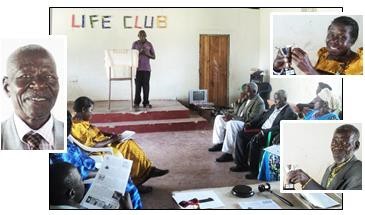
Othieno William Wilberforce (pictured above left) of Uganda, reports that the Tororo congregation hosted another Life Club (pictured above) in October 2016. Life Clubs have also been held at the GCI youth camp in northern Uganda.
For more information about Life Club, including how to start one and for a copy of the Life Club manual, email your request to geoff@geoffsole.co.uk.
To download a copy of GCI’s current Speech Club manual, click here.
Keysha Taylor
This is both a prayer request and and prayer report on behalf of Keysha Taylor, wife of Charles Taylor, lead pastor of one GCI’s Miami, Florida, area congregations. A few weeks ago during a surgical procedure, a growth was found in Keysha that contained leiomiosarcoma, a very rare and aggressive cancer. The growth was removed, but there was the lingering question as to whether or not more of the cancer was growing in her body. Prayer was requested, and just this week, Keysha had a PET scan to look for more of the cancer. We are prasing God that none was found! Charles sent us this comment before the scan was conducted:
We are truly believing that God revealed the cancer, healed her, and will be glorified in the process. We praise God for his loving miracle. Please pray that no more cancer will be found in her body, that the process with our health insurance will work out completely and that we can move forward in enjoying serving our wonderful God.

Cards may be sent to:
Keysha and Charles Taylor
9650 Dunhill Dr
Miramar, FL 33025-3830
March Equipper: Forward in 2017
Through the articles and sermons linked below, the March issue of GCI Equipper addresses various issues relevant to GCI’s journey of renewal in 2017 and beyond.
From Greg: Trends for churches in 2017
GCI Vice President Greg Williams looks at ten trends likely to impact the ministry of our churches in the year ahead and beyond.
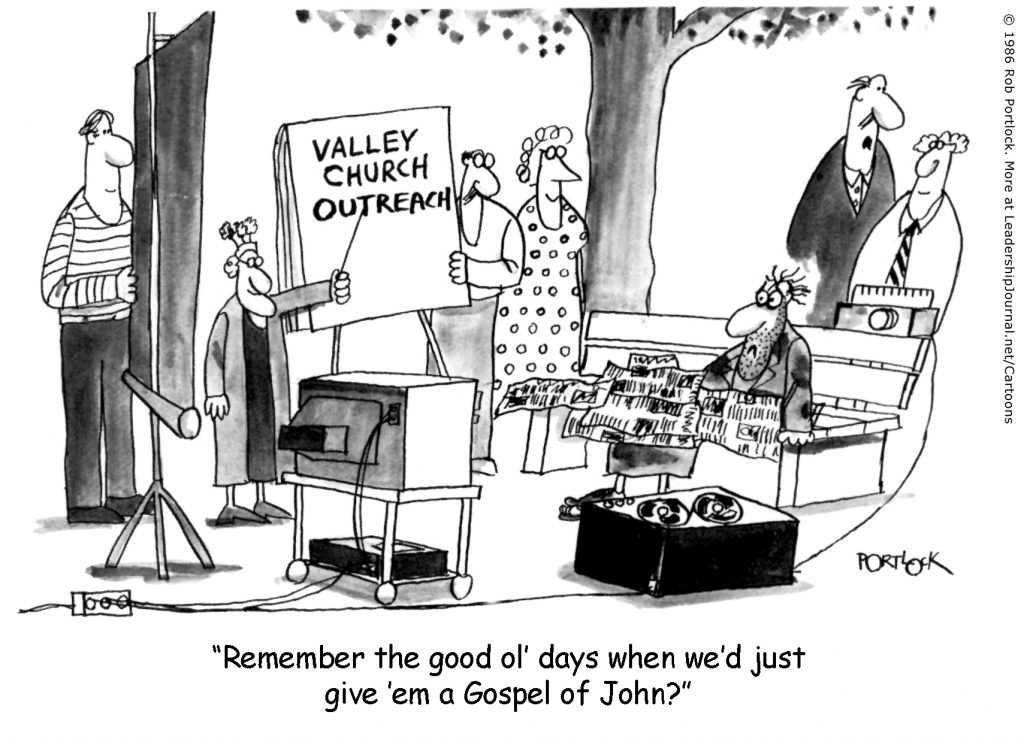
How to conduct a community assessment
GCI Pastor Sam Butler outlines a nine-step process congregations can use to assess and thus engage their community.
Community outreach resources
Here are links to articles that helpfully address various aspects of community outreach, engagement and assimilation.
Kid’s Korner: Resources for Children’s Ministry
Here are resources that address various aspects of ministry to children.
RCL Sermons: March 19—April 16
Here are six sermons synced with the Revised Common Lectionary (RCL), including three for Holy Week:
- Sermon for March 19
- Sermon for March 26
- Sermon for April 2
- Sermon for April 9 (Palm Sunday)
- Sermon for April 13 (Maundy Thursday)
- Sermon for April 16 (Easter)
For sermons for February 12 through March 12, click here.
Note: if you would like to receive Equipper automatically each month by email, you may subscribe by emailing Ted.Johnston@gci.org (put “subscribe to Equipper” in the subject line of your email message).
Greg Williams visits the Philippines
GCI Vice President Greg Williams recently visited the Philippines where he was the featured speaker at two ministerial conferences. For a report on the conferences, click here.
Worship music: problems and benefits
Dear Brothers and Sisters,
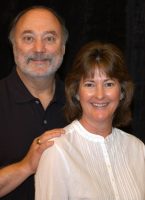
Tammy and I have shared many things with a couple that lives near us, including a journey of theological reformation. They’ve visited our church and, at their invitation, we recently visited theirs. The husband told me he wanted me to meet his pastor because their church recently left a Pentecostal denomination. In a way similar to ours, their faith journey has taken them out of legalism into grace.
We very much enjoyed their worship service—friendly fellowship, an inspiring sermon and an excellent praise band led by a worship leader with a particularly winsome personality. We did, however, encounter a problem—the worship music was painfully loud. I’m not joking when I say that the call to worship included an offer of earplugs. But even with earplugs in place, Tammy had to leave for the lobby until the music was over—and she was not alone.
Though some worship leaders believe very loud music encourages worship, several studies have shown that the opposite is often the case. Drowning out the voices in the congregation tends to inhibit, rather than encourage participation (and don’t forget the congregation’s auditory health!).

Though music in worship yields many benefits (I address several of them below), it also presents common problems. In addition to that of volume, there’s the problem of singing songs the congregation has never heard. On our visit to our neighbor’s church, while Tammy was in the lobby, I was in the sanctuary trying to sing songs I mostly did not know. Though the lyrics were projected onto a screen, I was not the only person in the audience who wasn’t singing. I enjoy learning new songs (and there are over 300,000 of them available at the click of your computer keyboard!), but frequently singing new (unfamiliar) songs can be a “worship killer.”
For most of us, singing aloud in worship involves some difficulty. But that difficulty is magnified when one doesn’t know the lyrics or the melody. I’m not saying it’s wrong to introduce new songs—Scripture admonishes us to “sing to the Lord a new song” (Psalm 96:1). But make new songs the exception, not the norm. Also, the songs chosen should be relatively easy for the congregation to sing—remember that most people are not experienced vocalists!
Another typical problem is the tendency for the worship team to slip into “performance mode” instead of focusing on facilitating the congregation’s worship. Mike Harland who directs LifeWay Worship made this comment: “When you turn the lights off and you have theatrical lighting on stage, you’re suggesting to the congregation they are here to watch something rather than participate.” All elements of worship, singing included, should facilitate the response of the people to who God is and what he has done, is doing, and will yet do for us. In that regard, please be sure that the lyrics to the songs selected are theologically sound. Worship teams should weed out songs that, though they may be popular, are not faithful to our Trinitarian faith.
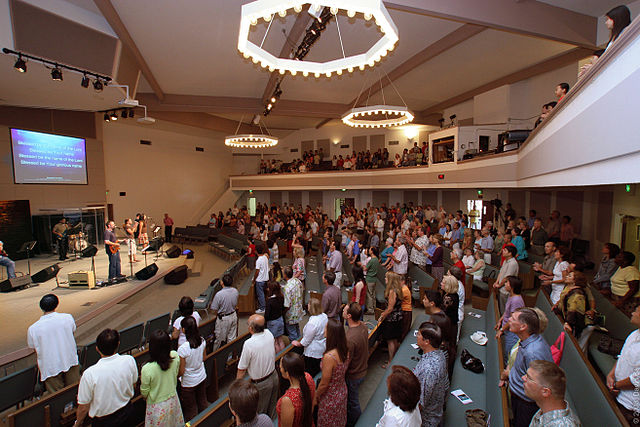
Now that we’ve looked at some of the problems to avoid, let’s now look at some of the many benefits that come with the proper use of music in worship. A creation of God, music is a powerful dynamic that seems to be “hard-wired” into all of creation. Scientists have also discovered that music (depending on its quality) either stimulates or retards growth in plants. They’ve also found that music stimulates more parts of the human brain than anything else. Note this related comment from violinist Daniel Roumain:
You know when someone says that a piece of music “touched me” or “moved me,” it’s very literal. The sound of my voice enters your ear canal and it’s moving your eardrum. That’s a very intimate act. I am very literally touching you, and when you speak to me, you are literally touching me.
By God’s design, singing music together is a vital part of worship. We see this in God’s use of corporate singing at the time of Israel’s founding. Notice this Old Testament passage where God speaks to Moses:
Write down this song and teach it to the Israelites and have them sing it, so that it may be a witness for me against them. When I have brought them into the land flowing with milk and honey, the land I promised on oath to their ancestors, and when they eat their fill and thrive, they will turn to other gods and worship them, rejecting me and breaking my covenant. And when many disasters and calamities come on them, this song will testify against them, because it will not be forgotten by their descendants. I know what they are disposed to do, even before I bring them into the land I promised them on oath. (Deuteronomy 31:19-21)
God wanted Israel to sing a particular song that would serve the immediate generation as a criterion for their judgment (forewarning them of the results of their unfaithfulness), and then for future generations of a reminder of the mistakes their ancestors had made. Worship songs thus bear powerful, transforming messages. In our day they serve to build up the church, helping people turn their hearts to God and learn spiritual truths that encourage them to live the redeemed life. The melodies of the songs make it easier to remember the lyrics, which remind us of God’s love, his faithfulness, and his commitment to us. Paul admonishes us to communicate these vital truths to one another by singing “psalms, hymns and spiritual songs” (Ephesians 5:19). In our corporate worship we not only sing praises to God, we communicate, in song, with one another concerning God.
In addition to these benefits related to singing in worship, let’s recall one that the prophet Zephaniah mentions in a prophecy concerning the Day of the Lord:
The Lord your God is in your midst, a mighty one who will save; he will rejoice over you with gladness; he will quiet you by his love; he will exult over you with loud singing. (Zephaniah 3:17 ESV)
Listen carefully—do you hear our Lord singing? Let’s join in together!
Worshipping our Lord with you in song,
Joseph Tkach
David Perry retires
We extend our thanks and congratulations to long-time GCI-USA pastor David Perry and his wife Jonnie. Davd retired last week after 28 years and 8 months of full-time employment with GCI.
 Dave, who grew up in Illinois, begin part-time employment with GCI in 1969 while a student at Ambassador College in Big Sandy, TX. Following graduation in 1973, Dave operated his own window cleaning company for several years. Ordained an elder in 1985, Dave was hired by GCI in 1988 to begin working full-time in employed ministry. He started as assistant pastor of the Charleston, SC congregation, then associate pastor in Savannah, GA, then senior pastor in Pasco and Quincy, WA. In 1996 he was transferred to Indianapolis, IN to pastor four congregations. He continued in that pastoral ministry until his recent retirement.
Dave, who grew up in Illinois, begin part-time employment with GCI in 1969 while a student at Ambassador College in Big Sandy, TX. Following graduation in 1973, Dave operated his own window cleaning company for several years. Ordained an elder in 1985, Dave was hired by GCI in 1988 to begin working full-time in employed ministry. He started as assistant pastor of the Charleston, SC congregation, then associate pastor in Savannah, GA, then senior pastor in Pasco and Quincy, WA. In 1996 he was transferred to Indianapolis, IN to pastor four congregations. He continued in that pastoral ministry until his recent retirement.
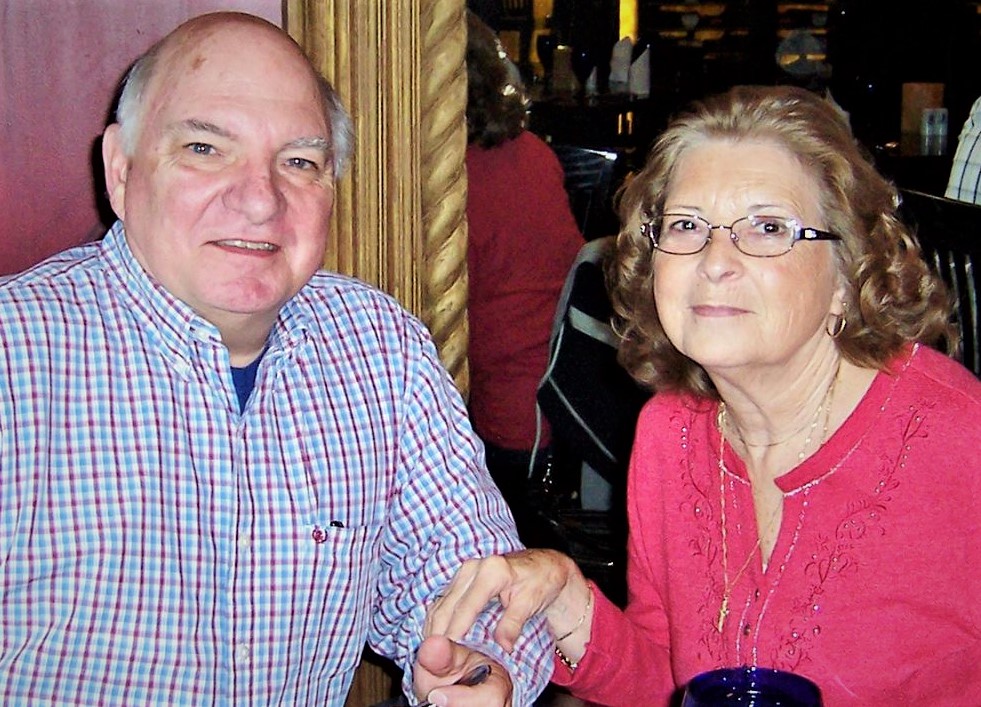
Upon retirement, Dave was replaced as senior pastor of the Indianapolis church by Josh McDonald. Dave will continue as a bi-vocational (volunteer) pastor, serving as the facilitator of GCI’s fellowship groups that meet in Terre Haute, Hope, and Lafayette, IN.
Here is a short video taken during the recent church service in Indianapolis in which Dave and Jonnie were honored for their many years of service to the congregation. This worship service was also the inauguration of the congregation’s new meeting location.
On YouTube at https://youtu.be/Qv7SPEkcbs0.


